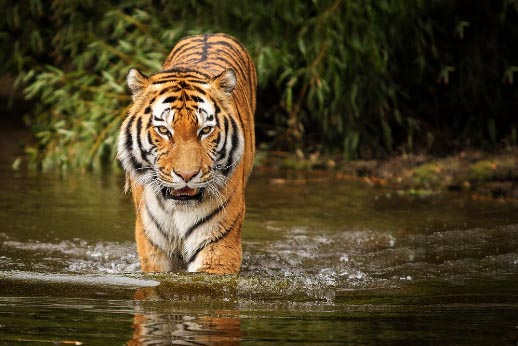 Introduction to Sundarban-
Introduction to Sundarban-
The Sundarban is one of the most captivating natural wonders on Earth, located in the southern part of Bangladesh and partly in India. Known as the world’s largest mangrove forest, it covers approximately 10,000 square kilometers, with about 60% in Bangladesh. It is a UNESCO World Heritage Site and a critical habitat for a wide variety of species, including the iconic Royal Bengal Tiger.
The name “Sundarban” literally translates to “beautiful forest,” and true to its name, it is a breathtaking area filled with diverse flora and fauna, interwoven river systems, tidal waterways, and tranquil natural beauty.
History and Significance of Sundarban-
The Sundarban forest has a rich history dating back to ancient times. Historically, it was known for its impenetrable terrain, mythical stories, and as a source of honey and timber. Over centuries, local communities have learned to coexist with its fierce wildlife and volatile environment.
In 1997, UNESCO declared it a World Heritage Site because of its unique ecosystem and biodiversity. It is also recognized as a Ramsar Wetland Site, making it one of the most ecologically important areas in the world.
Geography and Landscape-
The Sundarban is a tidal halophytic mangrove forest situated in the delta region of the Padma, Meghna, and Brahmaputra river basins. It is characterized by:
- Interconnected rivers and creeks
- Mudflats and tidal waterways
- Salt-tolerant mangrove trees such as Sundari (Heritiera fomes)
- Estuarine and marine ecosystems
The Sundarban plays a crucial role in protecting the coastal areas from storms and cyclones, acting as a natural shield for millions of people.
Flora of the Sundarban-
The name “Sundarban” is believed to have originated from the Sundari tree, which is one of the dominant species in the forest. Some of the key plant species found in Sundarban include:
- Sundari (Heritiera fomes)
- Gewa (Excoecaria agallocha)
- Goran (Ceriops decandra)
- Nipa Palm (Nypa fruticans)
These plants have adapted to the saline, water-logged conditions and play a vital role in maintaining the ecological balance.
Fauna and Wildlife Diversity-
One of the major attractions of Sundarban is its spectacular wildlife. The forest is home to over 400 species of animals, including endangered and threatened species.
- Royal Bengal Tiger: The apex predator and the most iconic symbol of Sundarban.
- Estuarine Crocodile: Found in abundance in the rivers and creeks.
- Spotted Deer: Commonly seen grazing in the forest.
- Fishing Cat, Otters, Wild Boars, and Rhesus Macaques.
- Over 270 species of birds, including kingfishers, eagles, herons, and migratory birds.
- Marine life includes Hilsa fish, mudskippers, crabs, and shrimps.
The elusive nature of the Royal Bengal Tiger, often swimming between islands, adds mystery and thrill to any Sundarban expedition.
Things to Do in Sundarban-
Visitors can engage in a variety of activities that highlight the natural and cultural wealth of Sundarban:
- Boat Safari: Glide through the waterways to spot wildlife and enjoy the tranquil beauty.
- Wildlife Photography: Capture stunning shots of birds, reptiles, and if lucky, the Royal Bengal Tiger.
- Visit Watch Towers: Such as Kotka, Hiron Point, and Dobanki for panoramic views.
- Village Tours: Meet local communities and learn about their sustainable living practices.
- Bird Watching: A paradise for bird enthusiasts, especially during the migratory season.
- Mangrove Walks: Walk along designated trails to observe plant life up close.
Cultural and Human Interaction-
The Sundarban is home to several ethnic communities who live in harmony with nature. They rely on fishing, honey collection, and small-scale agriculture for their livelihood.
Their traditions, folklore, and festivals often revolve around the forest and its deities, such as Bonbibi, the guardian spirit of the forest.
Travel Tips for Visiting Sundarban-
- Entry Permission: Required for entering the protected forest area.
- Best Mode of Transport: Motorboat or launch.
- Travel Duration: Minimum of 2-3 days to explore properly.
- Clothing: Light cotton clothes, sun protection, and insect repellent.
- Local Guides: Always travel with a licensed local guide for safety and navigation.
Best Time to Visit Sundarban-
The ideal time to visit Sundarban is during the winter months from November to March. The weather is cooler and dry, making it suitable for boat safaris and wildlife spotting.
- Avoid: Monsoon season (June to September) due to high tides and heavy rainfall.
- Festive Bonus: December and January often have local cultural events and fairs in nearby villages.
Conclusion-
The Sundarban is a treasure trove of biodiversity, culture, and natural beauty. Whether you’re a nature lover, wildlife photographer, or adventure enthusiast, Sundarban offers a once-in-a-lifetime experience. It stands not only as a global biodiversity hotspot but also as a living testament to human and nature cohabitation.
By promoting eco-tourism and sustainable travel practices, visitors can contribute to preserving this unique ecosystem for future generations.
FAQs about Sundarban-
What is the Sundarban famous for?
Sundarban is world-renowned for being the largest mangrove forest and home to the Royal Bengal Tiger.
Is Sundarban safe for tourists?
Yes, Sundarban is safe for tourists when traveling with licensed guides and tour operators.
Can we see tigers in Sundarban?
Tigers are elusive, but there are chances of spotting them during boat safaris.
How can I reach Sundarban?
You can reach Sundarban from Khulna, Mongla, or Satkhira via boat or launch.
Is permission required to enter the Sundarban forest?
Yes, special permission from the Forest Department is needed to visit core areas.
What type of accommodation is available in Sundarban?
Eco-resorts, forest lodges, and government rest houses are available.
Can we travel to Sundarban with children?
Yes, but extra caution is needed, and it’s best to avoid the core forest zones with young kids.
What is the duration of a typical Sundarban tour?
A complete Sundarban tour usually lasts 2 to 4 days.












